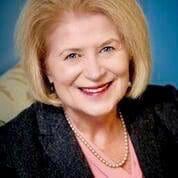Search Posts
Recent Posts
- New ALS treatment by PathMaker Neurosystems. Co. funded by RI Life Sciences Hub to come to RI. June 3, 2025
- ART! Cape Verdean Art at New Bedford Whaling Museum June 3, 2025
- Brown University Health names Samuel M. Mencoff Chair of the Board June 3, 2025
- Rhode Island Weather for June 3, 2025 – Jack Donnelly June 3, 2025
- Why 13-15 Rhode Island cities and towns oppose weapons ban legislation being voted on TODAY June 3, 2025
Categories
Subscribe!
Thanks for subscribing! Please check your email for further instructions.

Breaking the Culture Iceberg
Leadership and Ethics – How CEOs Make Inclusive Decisions in Mergers and Acquisitions
By Mary T. O’Sullivan, MSOL
The game is won or lost on the field of cultural integration. Get that wrong and nothing else matters. – George Bradt
Ethical considerations should influence the leadership decisions and programs of a CEO during a merger with a multi-cultural organization. A CEO’s major ethical considerations are to balance leadership decisions and change management, based on establishing the right mix of people, culture and infrastructure to execute the company’s business, and this is a risky undertaking indeed.
People or talent selection and a robust infrastructure need to reflect the company’s vision and values. If the CEO relies on the old boy network, cronyism and politics the company will eventually fail, because the CEO did not incorporate the merged company’s style and culture. Relying on old friends with previous track records would be the easiest path for any CEO, and without considering the how the two cultures would work together, a CEO is at risk for personal failure as well as failure of the merger. Maintaining this balance may bode a short term for a CEO charged with such dramatic change. A merger without adjustment to two differing cultures as more of a change management and adjustment issue than a multicultural one; however, diversity can’t be ignored, and could be the downfall of the CEO as well as the company itself if not ethically executed.
The challenges to anticipate in creating a shared vision for this new organization are rooted in effective communication. The CEO is tasked with bringing the company together with a vision that speaks to all its stakeholders; customers, employees and shareholders. He has to establish and get universal buy in for what the company wants to be.
In a case where a number of competing entities are now brought together, messaging reflective of “a new beginning” or “better together” needs to be broadcasted through various internal media methods. The visioning sessions with senior leaders should be led by an outside, neutral party (like a consultant) and exercises in change management should be conducted with the results flowing down through the organization. Champions of the common vision and values among the leadership team should be established. Since there a multi-cultural merger may bring with it a greater representation of African American and Latino employees and customers, the vision and messaging need to be inclusive; that is through all visual and written means, the diverse populations need to be represented. A set of shared values reflective of the shared vision, including diversity of people and diversity of thought needs to be published and broadcast. Symbols need to be employed to assist in the messaging. In addition, the CEO has to walk the walk and talk the talk. Diversity in the front office, among his administrators and senior leadership team will speak volumes about living the company values and the vision. Without an inclusive shared vision and a set of shared values that is reinforced in word and deed, by modeling behavior, a sense of hypocrisy will hamstring success, and the CEO himself is likely to fail.
What internal and external environmental factors should you consider in carving out a multicultural leadership path that will support the success of your organization?
Internal Pressures: In a case of a merger with as much diversity as this one, the first consideration would be establishing proper people placement. A thorough HR review needs to be conducted and people need to be ranked in accordance with how they meet the criteria of the diverse and inclusive shared vision and values. With the vast pool of talent, the CEO needs to establish who are the “keepers” and who are the “hangers on”. Ranking talent, in the Jack Welch GE style should be implemented immediately, with the bottom 10% let go. Again, cronyism and political correctness need to be avoided in order for the most effective team to be created. Once the right team is in place, the company’s inclusive and diverse shared values and vision can more easily be implemented, paving the path to success. The CEO needs to ensure that “multilingual” becomes a criterion included in his workforce diversity effort and HR review where appropriate. Establishing the right team and the right size of the company will drive the infrastructure without abandoning the new set of diverse customers.
External Pressures: Managing factors such as alternative and renewable energy, technology advances, food safety and the current challenges of the customer all need to be considered in establishing a successful merged multi-cultural business model. The company could establish programs encouraging employees to pursue careers in renewable and alternative energy by creating centers of excellence in local areas where the majority of diverse employees live. Again, basing the management approach on a shared vision and values, and with the best people in place, leveraging social change, diverse teams can be successfully established and deployed to address these pressing social issues.
How might you need to work differently to cultivate the organizational support within the different business units that is necessary to ensure the success of your multicultural leadership effort?
“The Culture Iceberg” surely needs to be understood in order to enact such dramatic cultural changes. Often, the factors “above the waterline” are addressed, while those factors “below the waterline” are ignored. Bringing the leadership team together with the help of a consultant to inculcate these steps could be a first step in ensuring success, as without leadership buy in, no change will ever take place.
In addition, by employing shared vision and values as guidance to change, organizational support within diverse business units can fall into place. Assuming the leadership at all levels have had buy in to the change, ownership of the vision and values at those levels can help ensure success. One approach may be to rotate employees as well as leaders across the different business units as well as within and across functions in order to more homogenize the business culture and foster cross- cultural appreciation and learning.
In addition, research has shown that multicultural literacy needs to be emphasized for the benefit of the diverse customer base and workforce. However, the challenge will be to make suitable multicultural accommodations while maintaining the integrity of the shared vision and values. Inclusiveness and diversity need to be defined in keeping with company standards. Over time, research has shown that inclusiveness and diversity proved to be synonymous with excellence in all business circumstances.
When we give serious thought to merging two diverse cultures together business as usual will no longer work. In order to establish organizational support within different business units, an inclusive, diverse shared vision and value system needs to be established with leadership buy in at all levels. Rotational assignments, diversity training and cross-cultural experiences can accomplish the company goals of corporate integration and multi-culturalism, without compromising the integrity of the shared vision and values.

Connect with Mary:
Mary@encoreexecutivecoaching.com
www.encoreexecutivecoaching.com
Mary T. O’Sullivan
Mary O’Sullivan has over 30 years of experience in the aerospace and defense industry. In each of her roles she acted as a change agent, moving teams and individuals from status quo to higher levels of performance, through offering solutions focused on changing behaviors and fostering growth.
Mary has a Master of Science in Organizational Leadership from Quinnipiac University. In addition, she is also an International Coaching Federation Professional Certified Coach, a Society of Human Resource Management Senior Certified Professional and has a Graduate Certificate in Executive and Professional Coaching, from the University of Texas at Dallas.
In her leadership and executive coaching, she focuses on improving the executive behaviors that slow down performance and lead to growth, such as soft skills, communication, micro-bias awareness, etc. She has successfully helped other professionals, such as attorneys, surgeons, pharmacists, and university professors, make career decisions to lead to success in their chosen careers. In addition, small business owners have sought Mary’s services to bring their companies into greater alignment, working on their culture, vision, mission, values and goals as well as organizational structure. Mary’s executive coaching has been mainly with large organizations among them: Toray Plastics America, Hasbro, Raytheon Company, Lockheed Martin, CVS Healthcare, Sensata Technologies, Citizen’s Bank, Ameriprise, BD Medical Devices, Naval Undersea Warfare Center, (Newport, R.I.), General Dynamics, University of Rhode Island, Community College of Rhode Island, etc.
Mary has facilitated numerous workshops on various topics in leadership such as, emotional intelligence, appreciative inquiry, effective communication, leading in adversity, etc. She has also written extensively on similar topics.
Mary is also a certified Six Sigma Specialist, Contract Specialist, IPT Leader and holds a Certificate in Essentials of Human Resource Management from the Society of Human Resources Development. Mary is also an ICF certified Appreciative Inquiry Practitioner, and a Certified Emotional Intelligence assessor and practitioner.
In addition, Mary holds a permanent teaching certificate in the State of New York for secondary education with Advanced Studies in Education from Montclair University, State University of New York at Oswego and Syracuse University. She is also a member Beta Gamma Sigma and the International Honor Society.
Mary dedicates herself to coaching good leaders to get even better through positive approaches to behavior change for performance improvement
